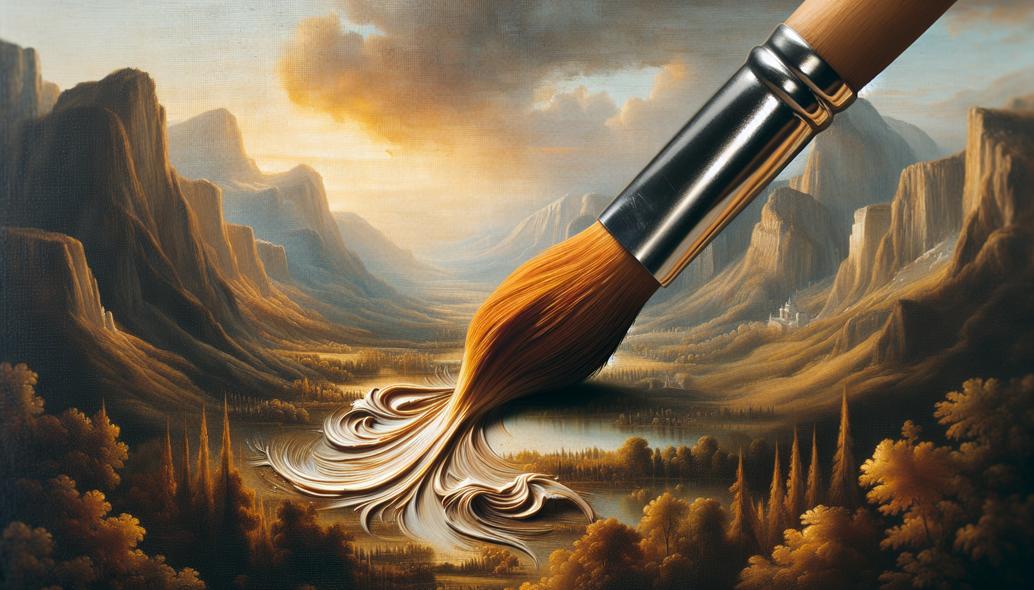The Art of Realism: Mastering Detailed Oil Painting Techniques
Realism in art captivates viewers with its precision and lifelike detail. Discover essential oil painting techniques to master this revered style and create breathtakingly accurate artworks. Dive into our guide and elevate your skills today!

The Art of Realism: Mastering Detailed Oil Painting Techniques
Realism, a cornerstone of Western art since the Renaissance period, has always been revered for its ability to capture the nuances of the real world. Unlike other styles, the art of realism emphasizes precision, meticulous detail, and a lifelike representation of subjects. This post delves into the expert-level techniques necessary to master realism in oil painting, guiding you step-by-step to create breathtakingly accurate artworks.
Understanding Realism and Its Significance in Art
Realism emerged in the mid-19th century as a counter-movement to Romanticism and Neoclassicism, aiming to depict subjects as they are in everyday life. Whether it’s a serene landscape, a busy street scene, or a delicate still life, realism oil painting techniques focus on achieving life-like detail and verisimilitude.
Artists like Gustave Courbet and Jean-François Millet set the stage for realism by rejecting idealization, instead choosing to present the unembellished truth. This approach allows viewers to connect more deeply with the artwork, appreciating the skill and dedication it takes to replicate the complexities of the natural world.
Essential Tools for Realism Oil Painting
Before diving into realism painting tutorial, it's essential to gather the right tools. The quality of your materials significantly impacts the final outcome of your artwork.
- High-Quality Oil Paints: Pigment-rich oil paints are crucial for achieving a wide range of colors and tones.
- Fine Brushes: Invest in a variety of fine brushes, including round, flat, and detail brushes.
- Canvas: Choose a smooth, tightly-woven canvas for better control over fine details.
- Palette Knives: Useful for mixing paints and adding texture.
- Mediums and Solvents: Linseed oil, turpentine, and varnishes extend drying time and add sheen to your paintings.
Achieving Accurate Proportions and Composition
The foundation of any realistic painting lies in its composition and the accuracy of its proportions. Begin with a preliminary sketch using a soft pencil or charcoal to outline your subject. Ensure your sketch is precise, as it will serve as the blueprint for your painting.
Grid Method
One effective way to achieve accurate proportions is the grid method. Divide your reference image and canvas into equal squares, and then carefully replicate the reference image grid by grid. This method helps in maintaining the proper scale and placement of various elements in your composition.
Layering Technique: Building Depth and Texture
Oil painting for life-like detail relies heavily on the technique of layering. Unlike other paint mediums, oils dry slowly, allowing you to blend and manipulate colors over an extended period. This characteristic is ideal for achieving the nuanced transitions and textures required in realism.
Underpainting
Start with an underpainting, which serves as the first layer and establishes the tonal values of your composition. Use a monochromatic palette to focus solely on the light and shadow before introducing colors. The underpainting acts as a guide and adds depth to the subsequent layers.
Glazing
Glazing is a technique where thin, transparent layers of paint are applied over a dry layer. This method enhances luminosity and creates a refined, glassy finish. Each glaze layer should be allowed to dry completely before adding the next.

Precision in Detailing: Capturing Life-Like Elements
To master realistic art style, focus on the minutiae that bring your subject to life. Pay careful attention to textures, reflections, and the interplay of light and shadow.
Brushes and Techniques for Detail
- Liner and Detail Brushes: Use these to paint fine details such as hair, fabric textures, and small highlights.
- Dry Brushing: This technique can create subtle textures and soft transitions.
- Scumbling: Apply a thin, opaque layer of paint over a dry layer to lighten areas without fully obscuring the underlying paint.
Color Mixing and Palette Control
Achieving realistic colors requires a sophisticated understanding of the color wheel and the ability to mix paints precisely. Avoid using colors straight from the tube; instead, mix them to achieve a more natural and varied palette.
Tips for Effective Color Mixing
- Limit Your Palette: Start with a limited palette of primary colors plus white and black. This limitation encourages more deliberate and skillful color mixing.
- Create a Color Chart: A color chart helps you see the results of different mixes and will serve as a handy reference.
- Study Your Subject: Pay attention to the subtle variations in color. For example, skin tones have different undertones depending on the light source and surrounding environment.
Mastering Reflections and Shadows
The accurate depiction of reflections and shadows is crucial in realism. They ground your subject in a believable space and contribute significantly to the perceived depth of your painting.
Reflections
For reflective surfaces like water or glass, observe how they distort and blur the objects they reflect. Use thin, horizontal strokes for water reflections to mimic the natural distortion caused by the surface tension.
Shadows
Shadows should be varied in tone and transparency. Avoid using pure black for shadows; instead, mix complementary colors to create a rich, deep shadow that maintains the vibrancy of the other colors in your painting.
Final Touches and Varnishing
Once your painting is complete, add the finishing touches to bring all elements together. Use a soft, clean brush to blend any harsh edges and unify the piece.
Varnishing
Varnishing is the final step that not only protects your painting but also enhances its colors. Choose the finish – matte, satin, or gloss – depending on the desired effect.
Conclusion
Mastering realism in oil painting is a rewarding journey that demands patience, precision, and a deep understanding of your materials and techniques. By incorporating these expert-level realism oil painting techniques and dedicating yourself to continual learning and practice, you can create artworks that capture the breathtaking intricacies of life.
If you’re passionate about stepping up your oil painting skills, start with these foundational concepts and gradually refine your methods. Remember, every great realist painter began somewhere, and with perseverance, you too can achieve mastery in this revered art style.
